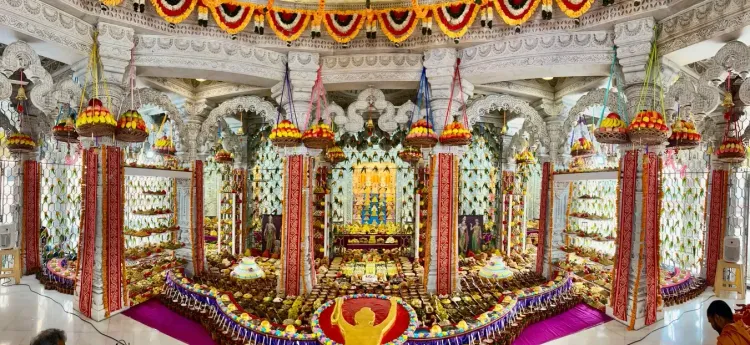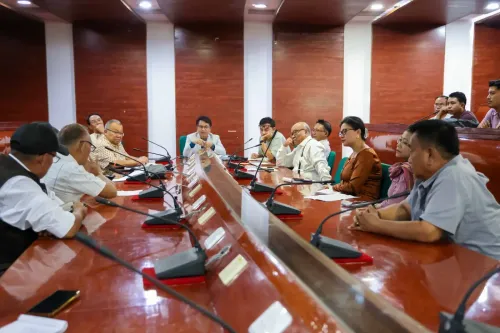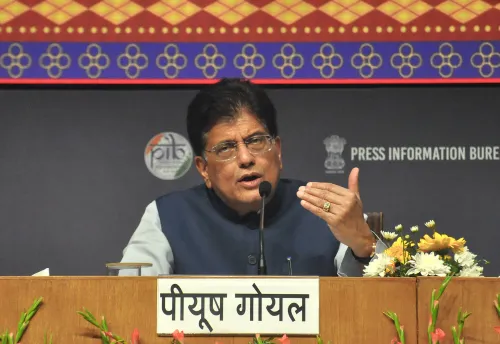How Did Delhi Celebrate Over 1,232 Sattvic Delicacies for Deities on the Annakut Festival at Swaminarayan Akshardham Mandir?

Synopsis
Key Takeaways
- Thousands of devotees participated in the Annakut festival.
- 1,232 sattvic dishes were offered to the deities.
- Celebrations were held in over 1,800 BAPS Swaminarayan mandirs worldwide.
- Govardhan Mahapuja included traditional Vedic rituals and music.
- Mahant Swami Maharaj blessed attendees with well-wishes for the New Year.
New Delhi, Oct 22 (NationPress) Upholding the cherished festival customs of India, the vibrant celebrations of Annakut and Govardhan Puja took place with immense joy and enthusiasm at Swaminarayan Akshardham Mandir on Wednesday. A multitude of devotees and visitors gathered at the temple grounds, showcasing their deep faith and devotion to partake in this sacred event.
Beginning in the early hours, throngs of devotees flocked to the temple for Annakut Darshan, where an impressive collection of 1,232 sattvic vegetarian dishes was meticulously arranged and offered to the deities. This grand display was made possible through the relentless efforts of hundreds of devoted volunteers who worked day and night, embodying selflessness, love, and service.
Inspired by Mahant Swami Maharaj, the festivals of Diwali and Annakut were celebrated with profound devotion and unity at over 1,800 BAPS Swaminarayan mandirs and centers globally, resonating with the spirit of other major Hindu festivities.
The festivities at Akshardham Mandir commenced at 10:00 a.m. with Govardhan Mahapuja, attended by senior swamis and thousands of devotees. A special replica of Govardhan Parvat was created in the temple courtyard, where swamis conducted the traditional Vedic Mahapuja and performed the divine arti for the deities. The air was filled with the sound of Vedic hymns and devotional music, enhancing the spiritual atmosphere.
On this auspicious occasion, Mahant Swami Maharaj blessed everyone, stating, “May all attain happiness in body, mind, and wealth. In this New Year, may we embrace the virtues of others and refrain from criticism and faults.”
Celebrated on the first day of the bright fortnight (Shukla Pratipada) following Diwali, this festival allows devotees to express their gratitude to God. In many Indian states, this day is also regarded as the beginning of the New Year.
According to ancient texts, approximately 5,000 years ago during the Dwapar Yuga, when relentless rains resulted from Indra Dev’s fury, Lord Krishna lifted the massive Govardhan Hill on his little finger to safeguard the residents of Gokul. After seven days, when the tempest subsided, Shri Krishna instructed everyone to worship Govardhan and commemorate the Annakut festival—a tradition that persists to this day.
The Annakut Darshan remained accessible to the public until late in the evening. This festival beautifully encapsulated the essence of “Tera Tujhko Arpan,” highlighting the belief that everything we have is bestowed by God, and true happiness lies in returning it to Him.









